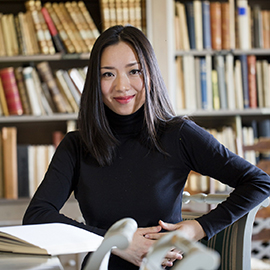PhD Research: Urban Depth – Strengthening Ties between People and City They Live in (working title)
Researcher:
Jing Jing

Jing Jing is a PhD Fellow in the Division of Urban and Regional Studies at the KTH Royal Institute of Technology. She holds both a Master of Science in Sustainable Urban Planning and Design from KTH and also a Master of Art in Environmental Design from HUST Huazhong University of Science and Technology, China. Her current research focuses on the rising phenomenon of urban loneliness and how the design, use and access to public space may impact upon it.
Prior to KTH, Jing Jing has worked for more than a decade as a practicing architect SAR/MSA, urban designer, researcher and consultant. She has led work on diverse projects in China, Sweden and internationally, on topics ranging from industrial heritage conservation and renovation to urban parks development and regional planning for sustainable tourism. She is an expert and frequently invited lecturer on the built environment for children and author of the book The Built Environment for Children: The Stockholm Experience. She is also the assistant editor of the book In the Post-Urban World, Emergent Transformation of Cities and Regions in the Innovative Global Economy which won the Regional Studies Association Best Book Award 2018. She co-authored the article Vem Äger City as one of the outputs of the currently ongoing project Who Owns the City. The article is published in S:t Eriks Årsbok 2018 Stockholm City.
Project: Urban Depth – Strengthening Ties between People and City They Live in
The rapid urbanization and transition processes of this century are leading not only to more people living in more cities, but living in urban areas that are growing bigger, denser and more complex. Cities may strive to become smarter, greener and more dynamic but they also face a myriad of challenges to create an environment for people to be healthy, happy and productive.
Many cities host an ageing population, and despite technological advances that allow people to connect more easily via a screen, more urban residents today may experience loneliness than ever before. Loneliness, which often associated with depression, recently has gained attention from governments as a critical threat to human well-being and has led to several new initiatives to address it. In the UK, for example, the Prime Minister launched the government’s first loneliness strategy (2018). In Sweden, several organizations have set out special program for elderly to social activities and address the loneliness issue, and last year the district of Kungsholmen in Stockholm city opened a telephone line for elderly whom felt lonely and wanted to communicate with somebody (2018).
While there is a considerable body of literature on loneliness in the fields of philosophy, history, psychology, neuroscience and gerontology, etc. there are relatively few studies that examine its relation to urban planning and design. How can planners and architects begin to understand the complex issue of how urban form and planning impact upon people feeling isolated or lonely? Do they have clarity even where to begin? This is the driving force steering the orientation of my research.

The overall goal of my research is to investigate the dynamics between public space and how it does or does not serve people that may be vulnerable to experiencing loneliness. It aims to help further understanding of the role that the planning and design of public space can have to address loneliness in the urban environment.
The research takes a transdisciplinary approach, which is necessary to study a problem as complex and multi-faceted as loneliness in the urban environment. Following my research plan for the first two year phase of my project, I have so far performed an extensive literature review and performed a study on the conceptualization of public space. This study employed a multiple sorting procedure, which is a methodology derived from environmental psychology. It aimed to learn about the first target focus group’s (elderly 65+ in Stockholm city) conceptualization of public space in general, and in particular the places they would go in situations when they are alone or felt lonely. A paper will be produced based upon this work in the first half of 2019. A second paper drawn from the literature review is being produced in parallel, and I expect to deliver this by June/July. A seminar at the division to present, discuss and reflect upon my learning and insights from my first year of the research is set to be held in mid-June 2019.
This research contributes directly to CFP’s thematic research area- Urban Form and Human Behavior. It also intersects with the project GoAL – Geography of Ages and Loneliness at many levels providing opportunities to both draw upon learning from that program and provide insights that may support its activities.
